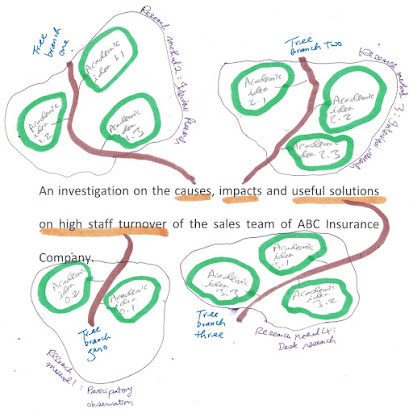The focused (basically highly simplified) way on research conceptualization for busy research students: a note of the method as proposed by me:
{note that research conceptualization done in this way may be considered by some dissertation supervisors to be too simple; it is then up to the dissertation project student to enhance the dissertation proposal so as to be considered appropriate by both the dissertation supervisor and the research student, e.g. MBA students doing final year dissertation projects.}
A focused way on research conceptualization is done with the following title template:
An investigation on the causes, impacts and useful solutions on _(the core topic)__ of __(the organizational unit of analysis)___: a case study research
An example of a project title, making use of the title template, could be:
An investigation on the causes, impacts and useful solutions on _high staff turnover__ of __the sales team of ABC Insurance Company___: a case study research
In this case, the research objectives, as derived from the project title, are:
Research objective 1: to evaluate the causes on high staff turnover of the sales team of ABC Insurance Company
Research objective 2: to evaluate the impacts on high staff turnover of the sales team of ABC Insurance Company
Research objective 3: to formulate useful solutions to address high staff turnover of the sales team of ABC Insurance Company
In addition, the focused way method ,as I propose, offers two diagram tools to further develop the research proposal work; they are as follows:
Diagram tool 1: The literature review tree on the focused dissertation project title statement:
Diagram tool 2: The research methods tree on the focused dissertation project title statement:
Note that the research methods tree (diagram tool 2) is constructed by mapping chosen research methods onto the literature review tree (diagram tool 1)



